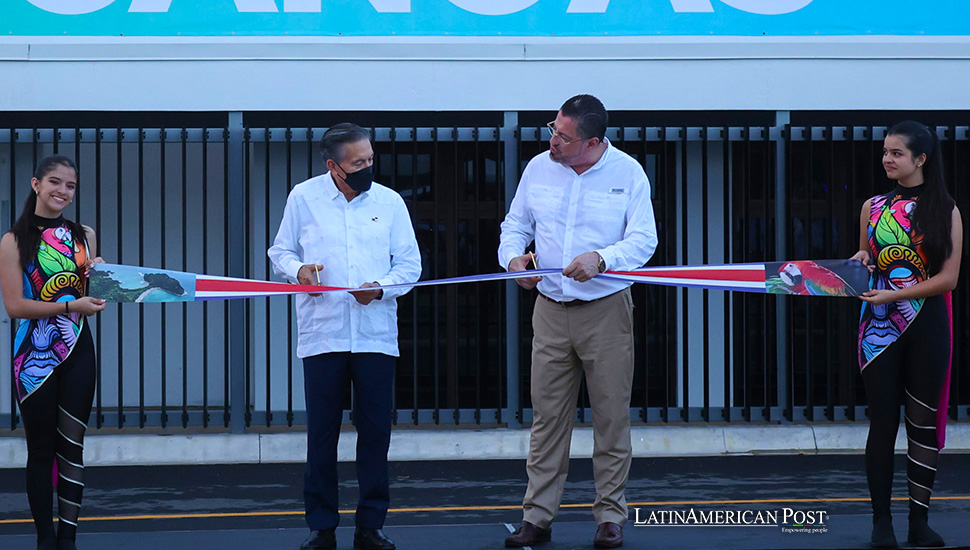Costa Rica and Panama Open Modern Border Facility to Boost Trade and Security

Costa Rica and Panama inaugurated a cutting-edge border post to streamline commerce, enhance tourism, improve passenger transport, and strengthen immigration control, marking a significant step in regional integration and bilateral cooperation.
A New Era of Cooperation
In a landmark move that underscores the growing interconnectivity and collaboration within Latin America, Costa Rica, and Panama have officially opened a new terrestrial border facility designed to facilitate trade, tourism, and passenger transport and implement more effective immigration controls. This development represents a significant step forward for both nations and sets a precedent for border management and bilateral cooperation across the region.
Located in the Costa Rican border town of Paso Canoas, the facility spans 14,000 square meters. Constructed with a $33 million loan from the Inter-American Development Bank (IDB), it houses customs, immigration, police, phytosanitary services, and agricultural and logistical dependencies for both countries. The establishment of the Integrated Control Center Paso Canoas is a testament to the collaborative spirit and shared vision of Costa Rica and Panama, aiming to enhance the efficiency of cross-border movements.
Designed to operate with digitized processes, the center serves as a single checkpoint for users and carriers entering Costa Rica from Panama, streamlining procedures and facilitating the movement of approximately 200 cargo trucks and 800 individuals who cross the border daily. This digitalization is expected to significantly reduce waiting times and the bureaucratic hurdles that have traditionally characterized regional border crossings.
Mirror Initiatives in Panama
In parallel, Panama is constructing a similar control center on its territory in San Isidro, which will begin operations by the end of 2024. This facility will function as the sole control point for trucks and individuals leaving Costa Rica for Panama, mirroring the objectives and functions of its Costa Rican counterpart.
The inauguration of these centers was marked by a ceremony attended by Costa Rican President Rodrigo Chaves and Panamanian President Laurentino Cortizo. Both leaders emphasized the historic friendship between their nations and highlighted the role of trade in fostering development for their citizens. President Chaves remarked that this initiative serves as a model for Latin America, demonstrating that progress is achievable through concerted efforts. He assured that the new facilities would alleviate the procedural “torture” previously endured by tourists and traders alike.
President Cortizo, on the other hand, underscored the spirit of bilateral cooperation in addressing everyday challenges such as security, migration, drug trafficking, and smuggling. He noted that the modernization of customs and fiscal control processes would lead to greater efficiency in commercial exchange, thus promoting growth.
The Integrated Control Center is part of a broader initiative under the ‘Framework Agreement to Implement Binational Integrated Control Systems at Border Posts between Costa Rica and Panama,’ ratified by both countries in 2019. This initiative is instrumental in the ongoing efforts to enhance the competitiveness of both nations and bolster trade within Central America.
The role of the IDB has been pivotal, providing strategic partnership and financial support to both governments through the Border Integration Program (BIP) and the Customs Logistic Integration Program (CLIP), with loans amounting to $100 million for Costa Rica and $75 million for Panama. These programs aim to modernize border posts, further facilitating trade and movement between the two countries and across the region.
Costa Rica’s endeavors extend beyond the border with Panama, as the country is also implementing similar initiatives at its borders with Nicaragua. These efforts indicate a broader trend in Latin America, where countries increasingly seek to strengthen regional integration and cooperation to address shared challenges and harness collective opportunities.
Lessons for the Region
The impacts of these developments are not limited to Costa Rica and Panama. Nations across Latin America are closely watching and learning from this initiative. Countries such as Colombia, Ecuador, and Brazil, which face similar challenges regarding border management and regional trade, may find valuable insights and precedents in the Costa Rica-Panama collaboration. The success of such projects could inspire further integration efforts across the continent, potentially leading to a more interconnected and prosperous Latin America.
Also read: Rising Violence in Costa Rica Is A Disturbing New Trend in a Former Safe Heaven
The inauguration of the Integrated Control Center at Paso Canoas is a significant milestone in Costa Rica-Panama relations and a model for regional cooperation. By streamlining border controls and fostering trade and movement, Costa Rica and Panama are enhancing their bilateral ties and contributing to the economic and social development of the wider Latin American region. This initiative exemplifies how collaboration and innovation can overcome traditional barriers, paving the way for a more integrated and prosperous future.




